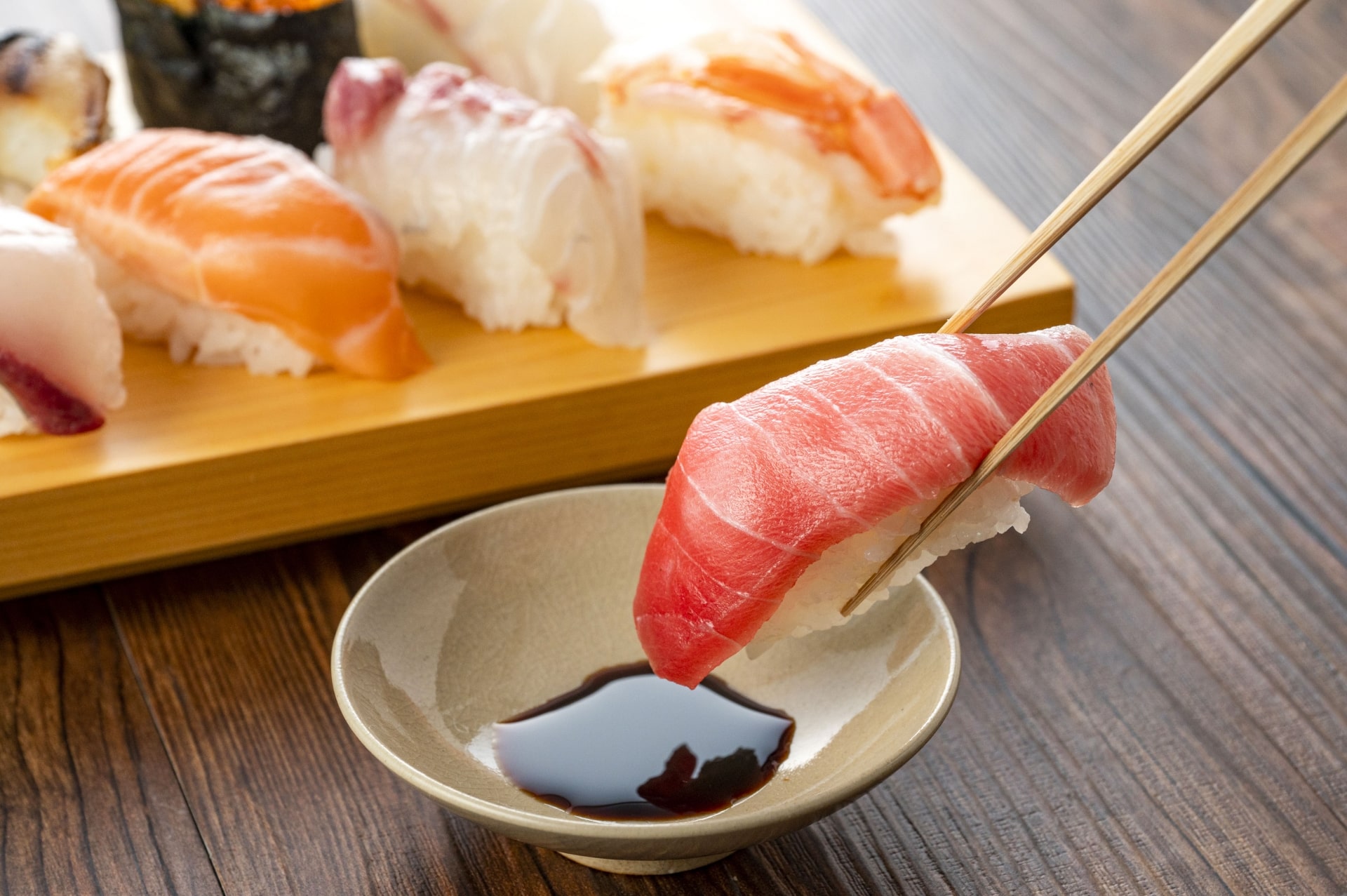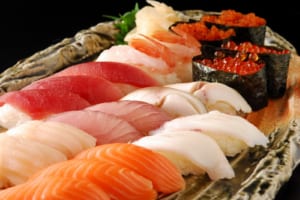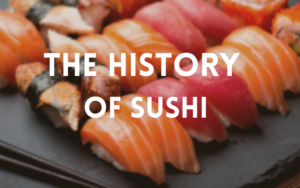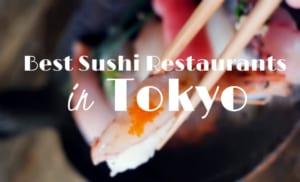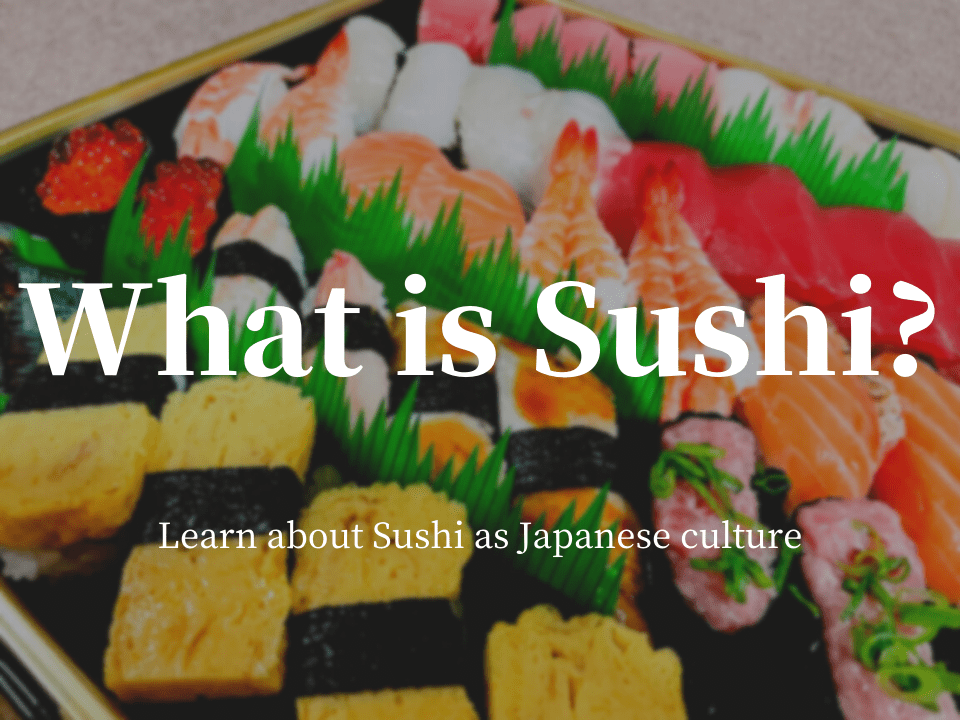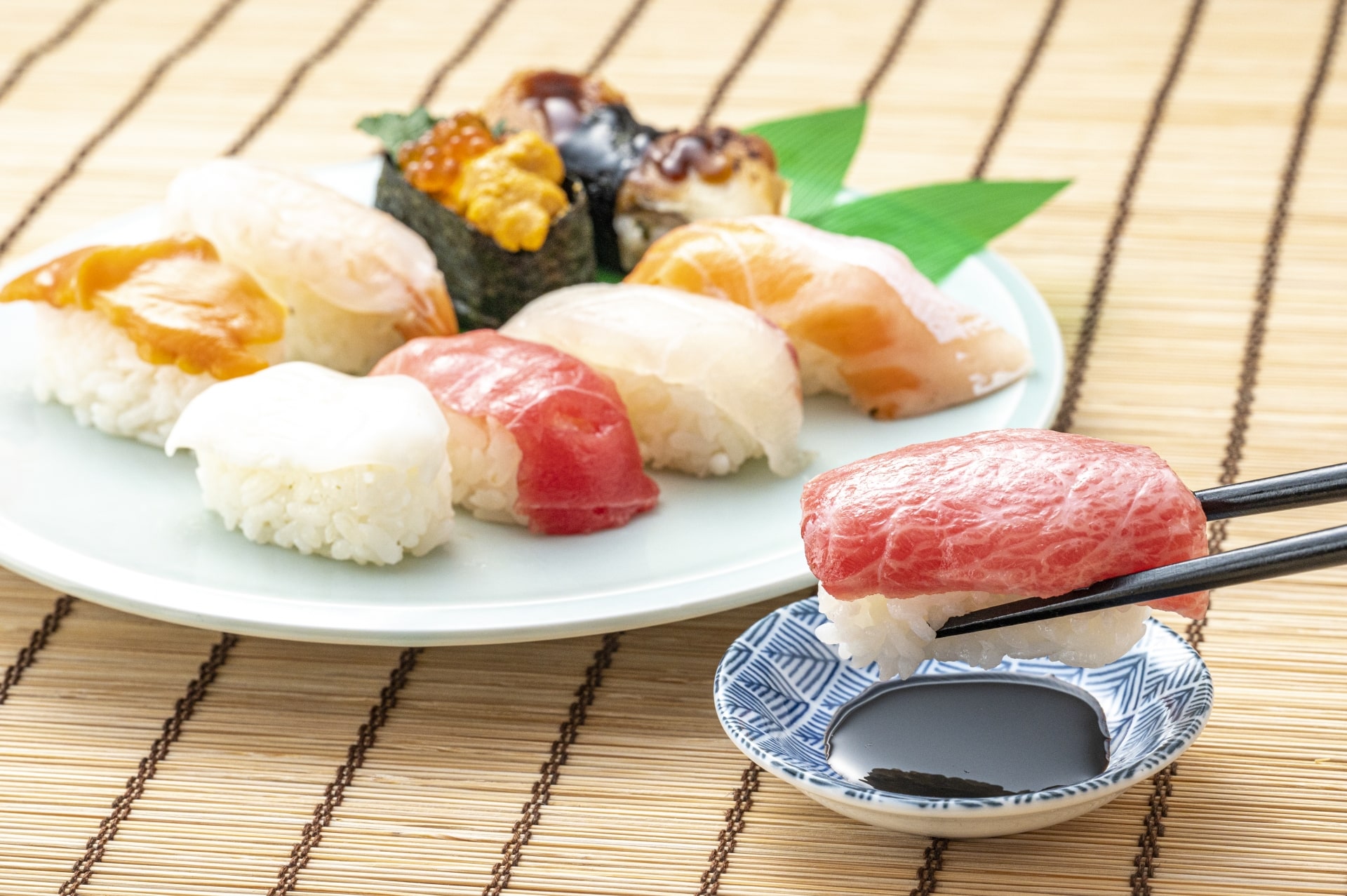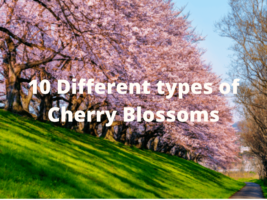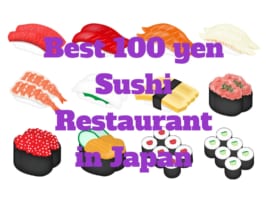Types of Tuna: Akami, Otoro, Chutoro, and Toro
A guide for the different cuts of Tuna
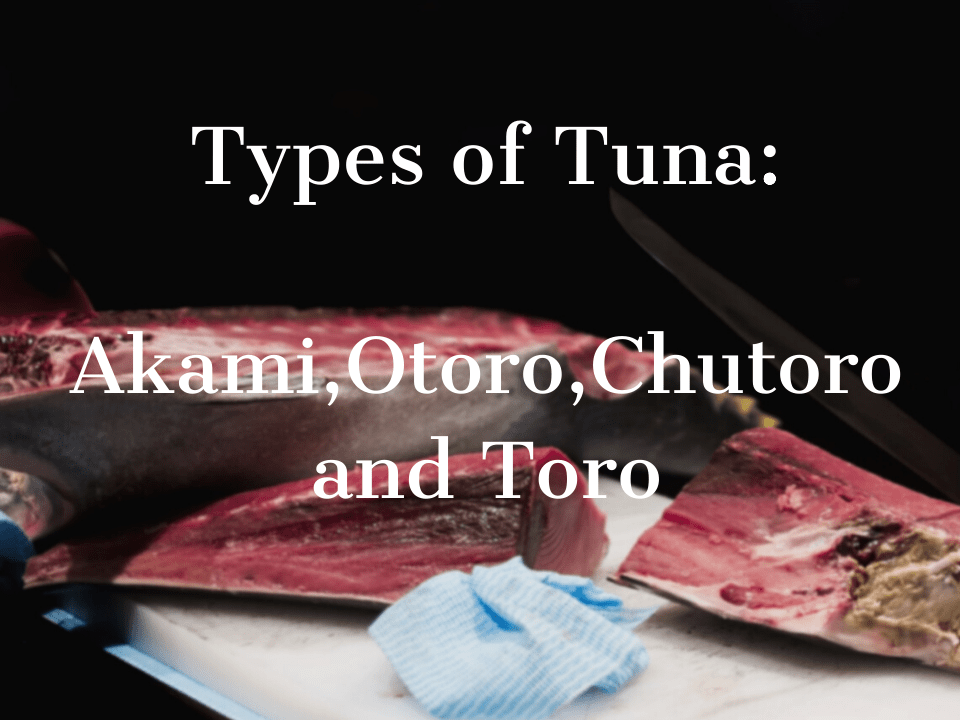
Are you a Tuna sushi lover?
If yes, then this article is for you. Many foreigners visit Japan, and one of the first things they are interested in doing is to eat sushi where sushi came from.
Nowadays, different types of sushi are served in restaurants. Not just in Japan but in different countries as well. And one of the best-known and most ordered sushi at restaurants in Japan is tuna sushi (known in Japan as “Maguro sushi”).
What is Maguro?
Maguro (マグロ) is the Japanese term for “tuna”. The most popular species of tuna consumed in Japan is the Bluefin tuna.
Tuna is a very large fish, and when consumed in Japan, it is chopped into different cuts. Each part has it’s own taste and qualities which is price varies depending on the part of the tuna.
Aomori Prefecture (青森県) is known as a leading marine area in Japan which is surrounded by four seas (the Sea of Japan, the Pacific Ocean, the Tsugaru Straits, and the Mutsu Bay). Many tuna grow in Aomori, especially the natural bluefin tuna. It is said that the Aomori tuna is the finest tuna in Japan.
Actually, until the Edo period (17th to 19th century), maguro was considered to be a low quality fish because the meat did not last long before it got bad. But with the invention of high-concentration of soy sauce, “tsukemaguro” became a huge thing and the popularity of maguro began to rise.
Now, maguro is the most commonly used fish for making sushi in Japan. Apart from sushi, maguro can be served as sashimi (fresh raw fish), and sometimes maguro sashimi is served as a donburi (a Japanese food which is the sashimi on top of a large bowl of fresh cooked rice and eaten with a little grated wasabi and dip in a soy sauce).
Many restaurants in Japan serve a variety of tuna dishes, especially seafood restaurants. And if you just want to taste different types of tuna sushi, there is a lot of sushi restaurant that only served different kind of tuna. Tuna can also be found at supermarkets or convenience stores like 7/11, family mart, etc.
In this article, when we say “types of tuna”, we refer to their cuts. And the value of tuna differ depending on the contents of fats. Here are some names of tuna cuts that describe the texture of the meat, how it taste and their value.
1. Toro (トロ)
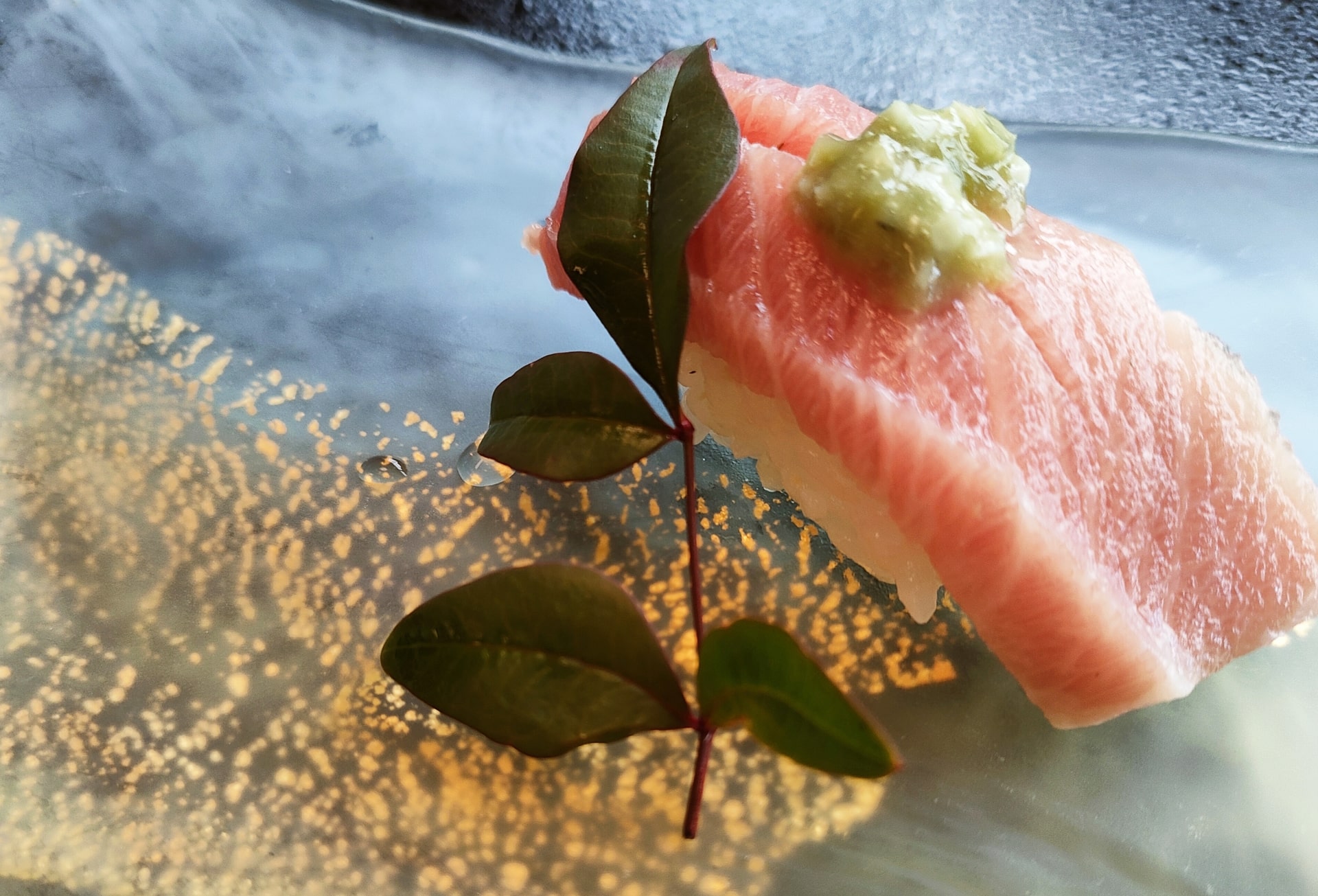
This is the more expensive part of maguro because it is rare and you can only get a small quantity. The fat in this meat contains high amounts of DHA and EPA. it is also rich in vitamin A, D and E but it is high in calories.
Other than eating toro as sushi or sashimi it is also prepared made into a paste and served as a topping for gunkan sushi. This is called negitoro (ネギトロ).
The Toro can be divided into two types which are “Otoro” and “Chutoro”. We will explain these two types from here on.
2. Chutoro (中トロ)
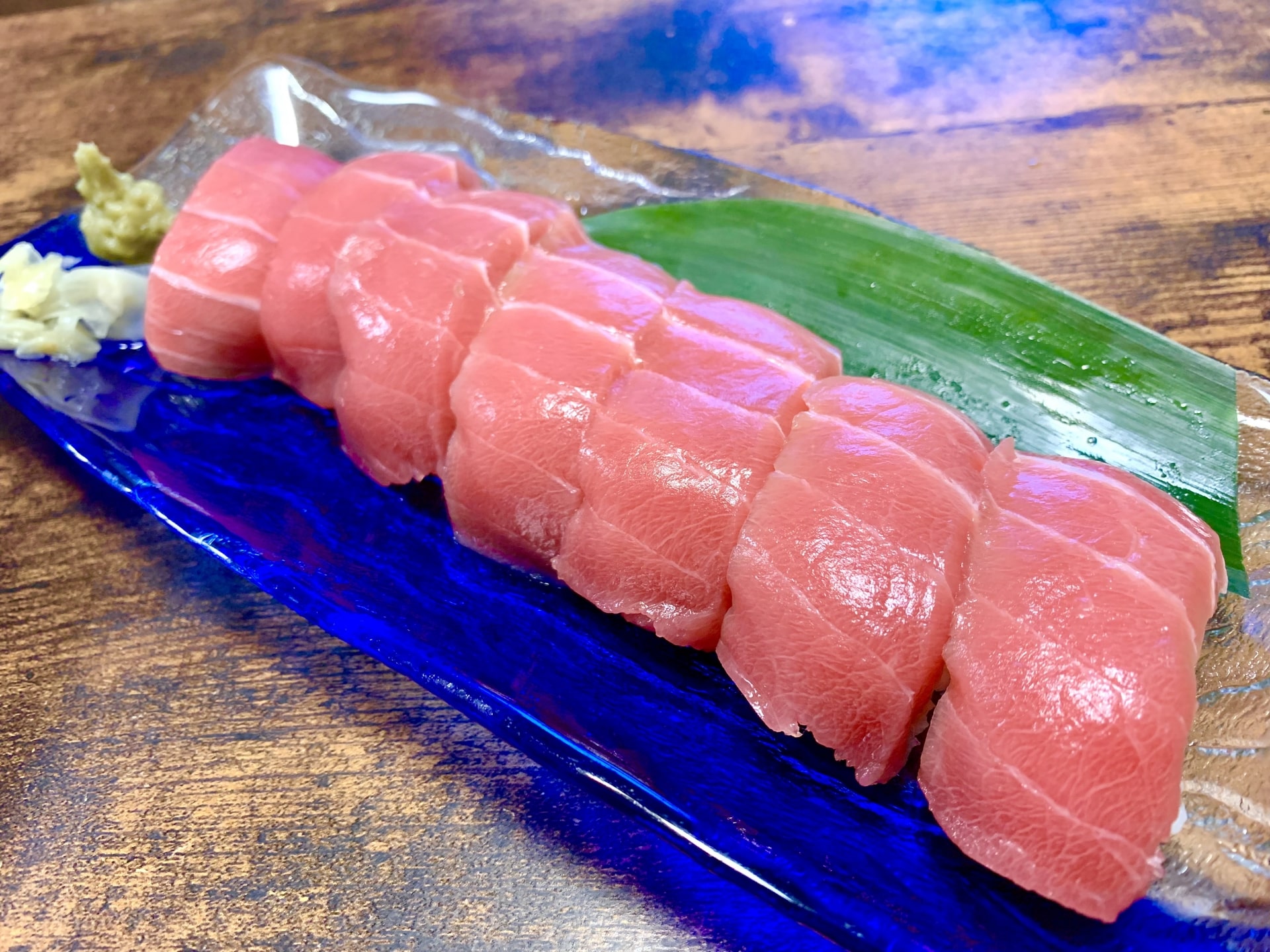
There is a meaning to this name. Chu (中) means “middle” in Japanese, and it is not too fatty nor too lean. It can be taken from the belly to the back area as well as the low part of the rear area of the tuna.
It is characterized by being moderately greasy and juicy but you also feel the meat when eating this part. The taste is similar to Akami but with a little sweetness added to it. It is not that expensive, and easy to buy at a reasonable price.
3. Otoro (大トロ)
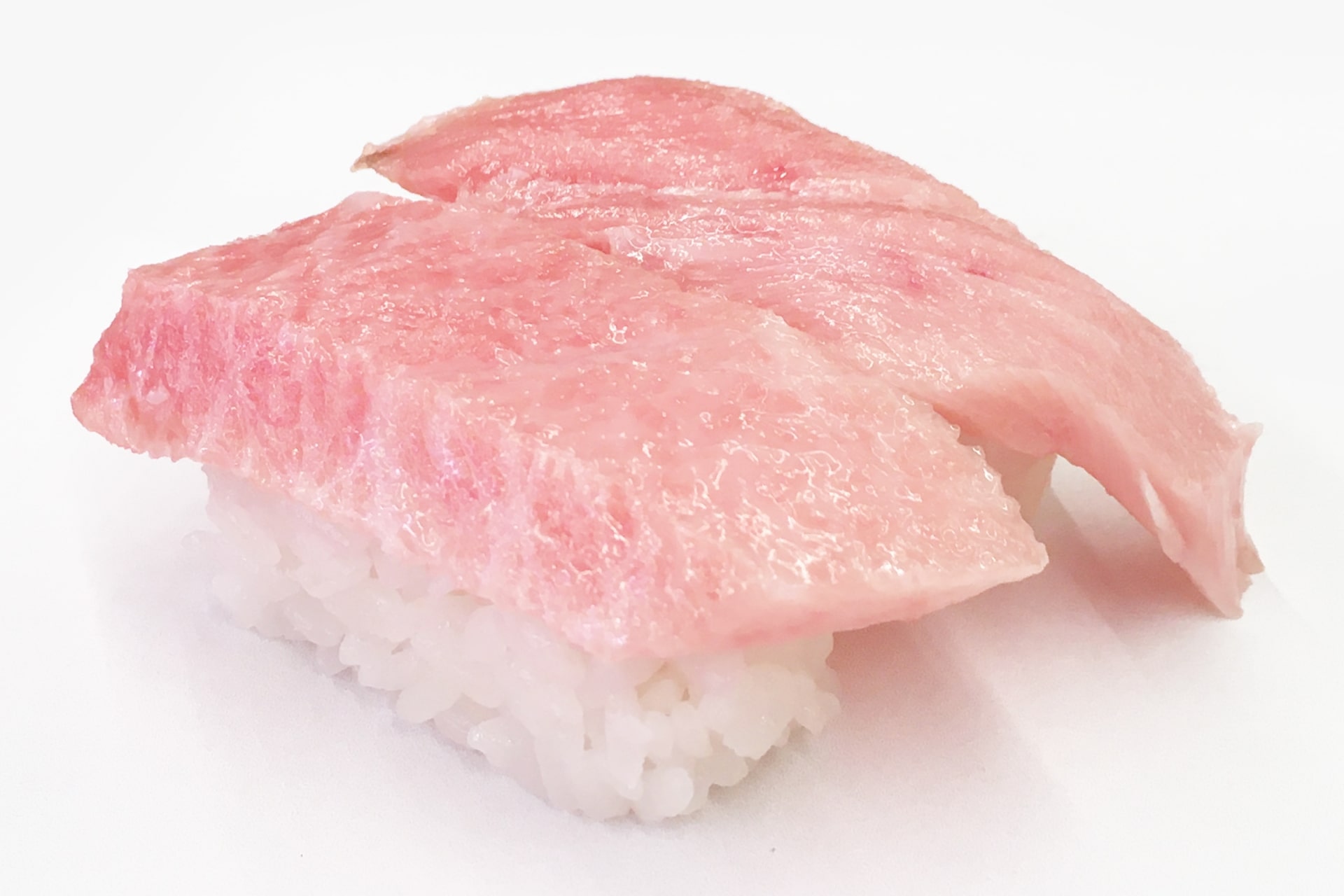
visually, it is more white than red due to the high content of fat. When you hear “fat”, you might think it will taste greasy. But actually, because of the type of fat, this part of the tuna feels like it melts inside your mouth and it has a more sweet taste compared to the akami part.
As I mentioned before, this part of the tuna used to be thrown away until the Edo period before refrigeration was invented. These parts of the tuna spoiled faster than the meatier part, but after the invention of refrigeration, it is now considered a high-quality cut of tuna.
4. Akami (赤身)
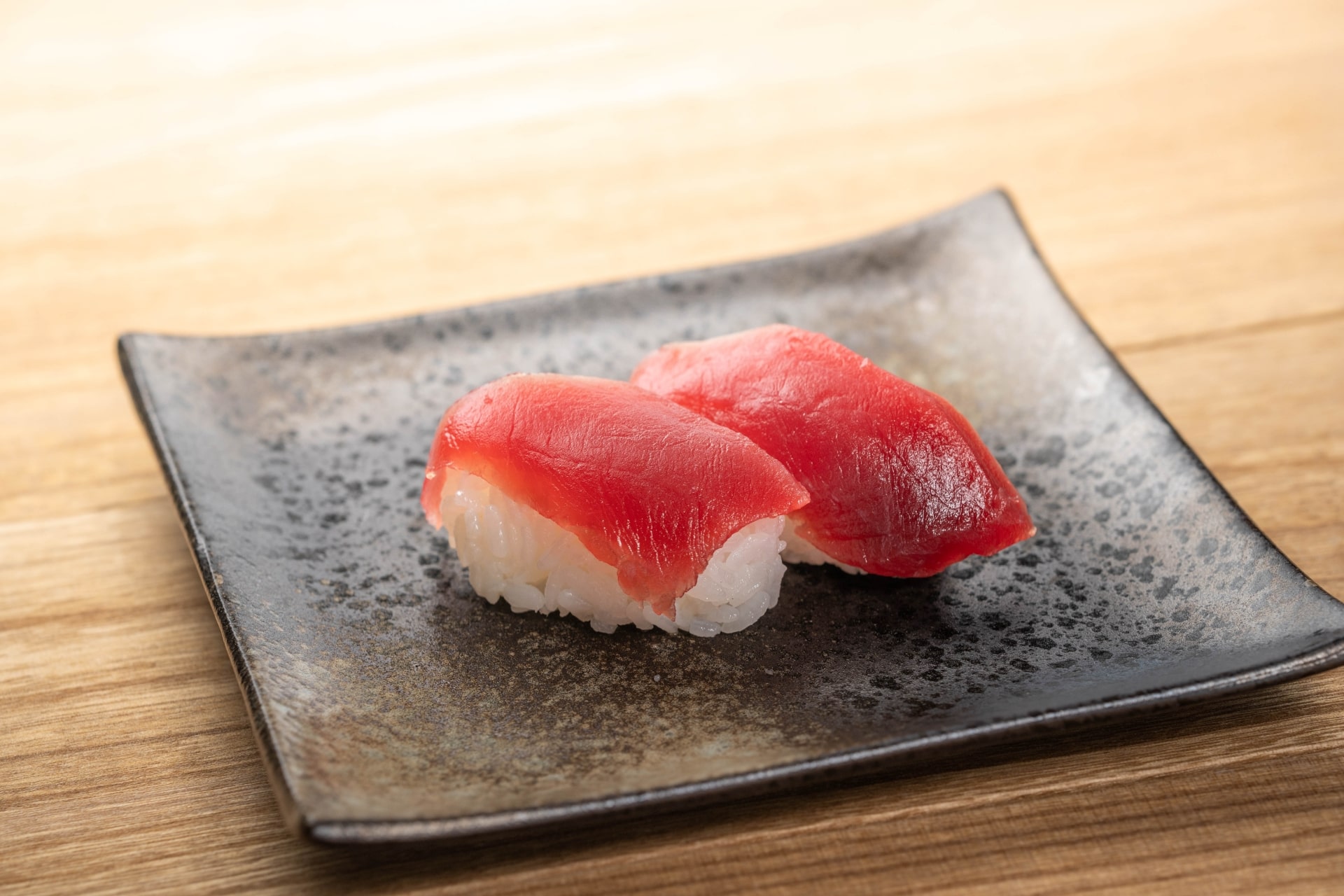
It is known as the leaner portion of maguro with almost no fat. Its color which is red is relevant to its name “akami”, meaning “red part” in Japanese. Compared to toro, akami is found much more in quantity in the tuna fish.
Also, this part of the tuna fish is what you will usually see in supermarkets. It is low-calorie, high protein, and healthy. Since this cut is very common, it is also the cheapest part of tuna.
Thank you for reading, And I hope this article helps you and gives you some knowledge about tuna. For more related articles check down below.
▽Related Articles▽
▼Editor’s Picks▼
Written by
Greetings to all mommies I am a supermom from Philippines. Previously, I worked and lived in Dubai for seven years, until 2015 the year I moved in Japan. Currently, I am happily settled here with my Japanese husband and our 7 months old baby. I could only describe my almost 6 years of living here as a roller coaster ride more so, after I gave birth to my son. Japan had changed me in ways unimaginable. It has influence my lifestyle, my perceptions and beliefs. I was able to witness firsthand the pros and cons of living in the country. From their language, culture and ethnicity, the people, place and in work. Those years were enough to give me quite personal and memorable experiences which I would be more than delighted to share with you.





